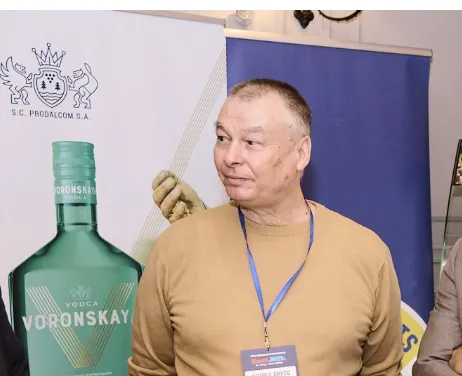536

The insertion of a support scheme dedicated to small farms will help strengthen the competitiveness and maintain the vitality and biodiversity of the rural areas. The Agreement was validated. What awaits us? At the beginning of August, the European Commission validated the Partnership Agreement 2014 - 2020 with Romania, a document that shows how the European structural and investments funds will be used in the programming period 2014 – 2020, period in which Romania benefits from European funds amounting to about 43 billion euro, of which over 22 billion euro are allocated for the cohesion policy. In the agricultural field,”the targets sets suggest a triangular approach with regards to the definition of sustainability”, as it is shown in an interesting doctoral dissertation of Bíró Boróka-Júlia, prepared under aegis of the Babeș -Bolyai University, Cluj-Napoca, Faculty of Economic Sciences and Business Management, with the title A STUDY OF IMPACT REGARDING THE REFORM OF THE COMMON AGRICULTURAL POLICY ON THE RURAL ECONOMY IN ROMANIA. ”According to this idea”, it is pointed out in the dissertation mentioned,”the first targets may be associated with the notion of economic sustainability, the second set of targets with the environment sustainability, and the third may be connected with what social sustainability means. In its current two-pillar structure, the Common Agricultural Policy (CAP) focuses more on economic issues through the first pillar and on social issues through the second pillar, regarding the rural development. It is also worth noting that the environmental concerns are gaining more and more importance in the political concept of CAP, being present as a „third” virtual pillar both within the measures of the first pillar, as well as within the second pillar of the policy.” For Romania, lining up with the „European model of agriculture” is vital. That is why the harmonious territorial development in Europe is sought, from which Romania may benefit. Moreover, the idea of the emergence of a third CAP pillar (different from the virtual one mentioned above) meant to unify the policies regarding pillars I and II in order to achieve food security goals in the context of climate changes and achievement of an effective territorial management would raise many problems for Romania, problems related to the efficiency of financing through CAP. Support for the production of cattle, sheep and goats sector Actual measures to support the livestock sector, with impact in the meat sector, will materialize in the granting of aid for cattle, sheep and goats, Community support for the producers of beef, mutton and goat meat in disadvantaged areas, state aids for improving animal breeds and for the conservation of endangered and near extinction breeds in România. A mumber of other measures concerning the vegetable sector or the overall conditions for granting aids will have an impact on the meat production sector. Thus, with regards to”Direct payment for single area” (SAPS), from the European Agricultural Guarantee Fund (EAGF), Romania aims at maintaining it by year 2020 included. Moreover, our country wishes to define the notion of ”Active farmer”, setting the decisions regarding the exclusion of some types of beneficiaries from direct payments. In this context, the question is whether Romania will draw up a "black list" of the entities excluded from the direct payments, in addition to the black list of the European Union which is mandatory. Another proposal aims at „the redistributive payment” (from EAGF) which represents an optional payment, that may be granted for the first 30 ha, irrespective of the farm size. Romania proposes the following scheme for the first 30 ha: 5 euro/ha for the first 5 ha and about 45 euro/ha for the rest of 25 ha. In the same context, Romania does not consider appropriate the Commission’s proposal to insert an upper limit (limitation) of the level of direct payment allocated to large farms, because such a measure would only lead to large farms split into smaller, eligible farms, with effects on their economic durability and competitiveness in the medium and long term. For instance, from the calculation made on APIA agency data, there resulted that the number of farms subject to this limitation in 2014 would be 1,760, and the amount made available would be of 98,24 million euro. Such measures, according to MARD (Ministry of Agriculture and Rural Development), will help the development of viable farms, from the point of view of size and productivity, theimprovement of food chain functioning, the increase of bargaining power of farmers and the increase of transparency and functionality of agricultural products market. Supporting the small farmers to avoid some phenomena as depopulation, agricultural lands abandonment and increasing their economic capacity to provide goods will be done by: increasing the financial support granted to them; simplifying the conditions for accessing funds; setting specific actions to promote products; specific measures aim at advising, consulting, professional training and loans granting to this category of farmers; developing the local distribution channels, to facilitate consumers’ direct access to the products of small farmers (ecological agriculture, traditional or local products) and supporting the local markets; setting some conditions and requirements regarding the minimum standards to achieve production and sell it on the market, adjusted to the financial capacity of small farmers. All these measures will cause changes in the food chain for the meat production, processing and distribution. The transfer between Pillars, the proposal of MARD Moreover, the MARD proposes the achievement of ”Transfer between Pillars” from Pillar I – direct payments - to Pillar II – rural development, in the years 2015, 2016 and 2017, to support the scheme for the small farmers in RDNP (Rural Development National Programme), scheme which provides for the granting of 120% of the direct payments level to farmers who cease their agricultural activity. Another proposal of MARD that aims at obtaining healthier foods aimed at ”Greening„ – to receive the payment for greening (from EAGF), which represents 30% of the annual national ceiling, and the beneficiaries must observe certain requirements: crops diversification, preservation of permanent pastures, presence of areas of ecological interest on the agricultural land (in this respect, it is required to notify the list of areas of ecological interest on the agricultural land). With respect to the ”Payment for the young farmers”, MARD aims to continue improving the demographic structure of the active population in the rural areas. Such farmers should be at most 40 years old in the year when they file the application, to settle for the time at a farm as heads of the farm, and payment is granted for a period of maximum 5 years from their settlement. The main forms of support for the agricultural producers in 2014, consistent with the Common Agricultural Policy
- In the vegetable sector
-single area payments (SAPS) - National Transition Aids NTA (former NCDP National Complementary Direct Payments) in the vegetable sector - State aid for the purchase of diesel fuel with reduced excise, 10.10.2013 -30.09.2014 - State aid for insuring the agricultural production: support by which 50% or 70% from the insurance premium is subsidized depending on the insured risks. -the specific aid for improving the quality of the agricultural products in the organic agriculture sector, granted to farms in the vegetable and animal sector undergoing a conversion to organic farming. -a financial support granted to groups of producers preliminarily recognized and to producers’ organizations in the fruit and vegetable sector, for incorporation and investments, the support being correlated with the value of the marketed production. - Support through the National Support Programme for the wine sector.
- In animal husbandry:
- National Transition Aids NTA (former NCDP National Complementary Direct Payments) for cattle, sheep and goats - Financing of the National Beekeeping Programme- Community support for the milk and beef, mutton and goat meat producers in disadvantaged areas-State aid for improving animal breeds - State aid for collecting animal carcasses (squaring). -De minimis aid for the conservation of endangered and near extinction animals in Romania - De minimis aid for the purchase of milk cooling tanks.





